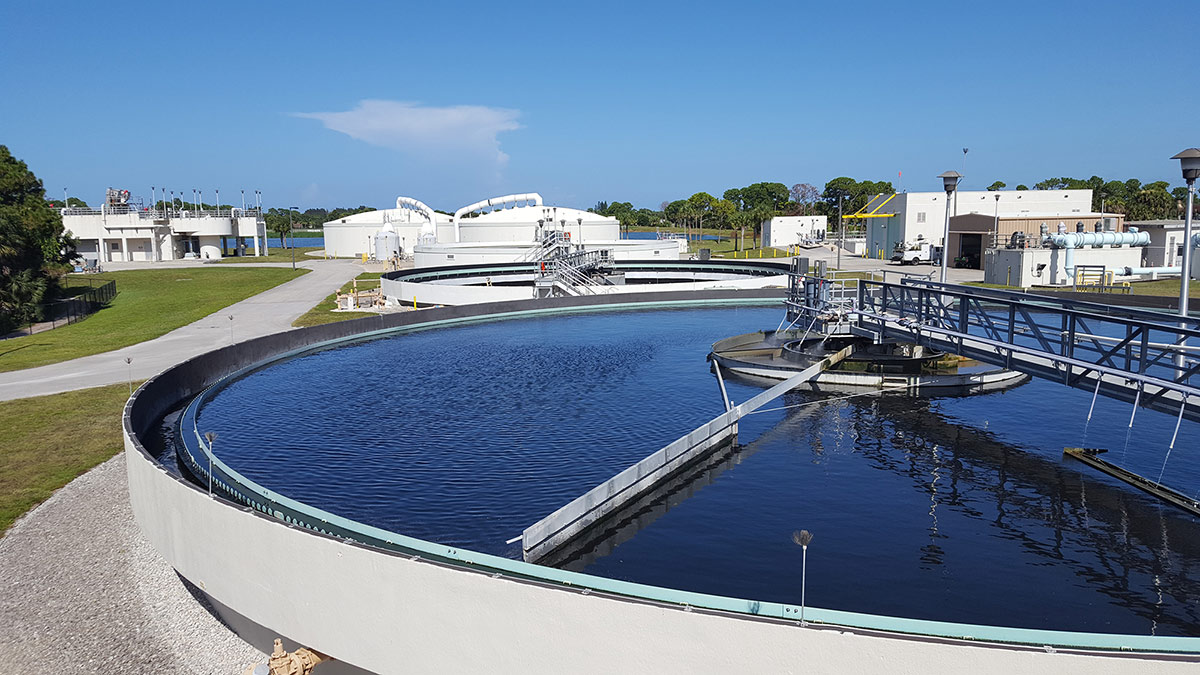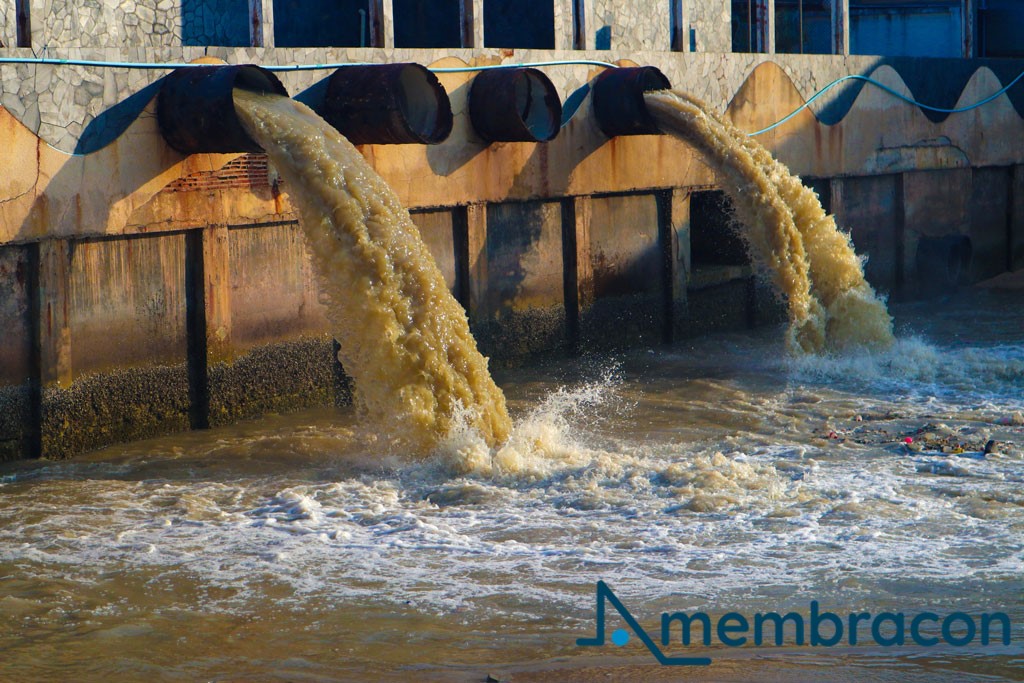Advanced Waste Water Treatment Solutions for Lasting Water Monitoring
Advanced Waste Water Treatment Solutions for Lasting Water Monitoring
Blog Article
Strategic Approaches to Enhance Drainage Therapy Effectiveness and Decrease Ecological Influence
In the world of waste water treatment, the pursuit for enhanced performance and lowered environmental impact is a perpetual obstacle that requires tactical services. The integration of sophisticated therapy modern technologies, energy-efficient procedures, source healing strategies, enhanced nutrient elimination strategies, and clever tracking and control systems stands for a diverse structure for attending to these pushing worries.
Advanced Therapy Technologies
Innovative membrane purification systems have transformed sophisticated wastewater therapy procedures, substantially boosting the elimination of impurities. These ingenious systems work forcibly water via a semi-permeable membrane, properly separating impurities from the water stream. The membrane layer's microscopic pores catch toxins such as microorganisms, infections, and suspended solids, enabling only cleansed water to travel through. This innovation has verified to be highly efficient in removing a variety of contaminants, consisting of drugs, heavy steels, and natural compounds, which are frequently challenging to get rid of through typical therapy techniques.
In addition, membrane layer purification systems use countless benefits over traditional treatment techniques. Additionally, these systems are very functional and can be quickly integrated into existing treatment plants or utilized as standalone devices for decentralized applications.
Energy-Efficient Processes
The combination of energy-efficient procedures in wastewater therapy systems is vital for enhancing resource usage and minimizing operational prices. By applying energy-efficient modern technologies, therapy plants can dramatically lower their carbon impact and overall ecological influence. One vital approach to enhancing energy effectiveness in wastewater therapy is the application of advanced aeration systems, such as great bubble diffusers or surface area aerators, which can boost oxygen transfer performance and lower power intake. Additionally, integrating power recovery systems, like anaerobic digestion for biogas production or utilizing excess warm for thermal processes, can help balance out power needs and promote sustainability.
In addition, optimizing process control and automation with using sophisticated sensing units and monitoring systems can enhance general power efficiency by adjusting operations in real-time based on real demand and conditions. Carrying out power audits and on a regular basis keeping an eye on power efficiency indications are vital methods to identify areas for improvement and track energy-saving campaigns efficiently. In general, the adoption of energy-efficient processes in wastewater therapy not just profits the setting but also adds to lasting price savings and operational sustainability.
Source Recuperation Approaches
With a concentrate on enhancing resource application and sustainability in wastewater treatment systems, the execution of source recuperation strategies becomes a critical element in boosting operational efficiency. Resource healing techniques in wastewater treatment entail the recognition and extraction of important resources from the waste stream, therefore turning what was once thought about waste right into a beneficial asset. By implementing source recovery techniques such as nutrient elimination and healing, power generation from raw material, and the manufacturing of recyclable water, wastewater treatment plants can reduce ecological effect while taking full advantage of performance.

Boosted Nutrient Removal Techniques
Carrying out innovative nutrient removal strategies is crucial for optimizing the performance of wastewater therapy systems. Enhanced nutrient removal plays an important duty in reducing the ecological influence of cured effluent released right into water bodies. One of the crucial strategies made use of for boosted nutrient removal is the procedure of biological nutrient removal (BNR), which includes the removal of nitrogen and phosphorus through biological procedures. This can be attained through using specialized microorganisms that can transform nitrogen compounds right into inert nitrogen gas through denitrification, and gather phosphorus within their cells with a procedure called improved see this here biological phosphorus elimination (EBPR)

In enhancement to BNR, advanced therapy techniques such as membrane layer bioreactors Your Domain Name (MBRs) and created marshes can likewise be used to improve nutrient elimination effectiveness. By integrating these sophisticated nutrient elimination techniques right into wastewater treatment municipalities, systems and markets can properly decrease nutrient contamination and protect the atmosphere.
Smart Surveillance and Control Systems
Using advanced modern technology, the integration of wise surveillance and control systems revolutionizes the operational effectiveness of wastewater therapy facilities. These systems incorporate sophisticated sensing units and information analytics to continually keep track of key parameters such as pH degrees, turbidity, liquified oxygen, and flow prices in real-time. By gathering and analyzing this data, drivers can get important insights into the performance of the therapy processes, allowing positive changes to optimize therapy performance.
Smart surveillance and control systems also support remote monitoring abilities, enabling drivers to accessibility real-time data and control features from off-site locations. This remote accessibility boosts operational adaptability and responsiveness, allowing swift treatments in case of system breakdowns or variations in influent quality. Furthermore, the predictive maintenance capabilities of these systems help prevent devices failures and lessen downtime, ultimately enhancing the total dependability of wastewater therapy operations (Waste Water Treatment).
Final Thought
In verdict, strategic approaches such as sophisticated therapy technologies, energy-efficient processes, resource healing strategies, boosted nutrient elimination techniques, and smart tracking and control systems play an essential function in enhancing wastewater therapy performance and lessening environmental effect. By applying these strategies, wastewater therapy plants can enhance their general efficiency, decrease power usage, recover beneficial sources, and why not look here make sure conformity with environmental regulations. These techniques are necessary for efficient and sustainable wastewater management methods.

In verdict, calculated methods such as sophisticated treatment modern technologies, energy-efficient procedures, source recovery methods, enhanced nutrient elimination strategies, and wise monitoring and control systems play a vital duty in boosting wastewater therapy performance and decreasing environmental impact.
Report this page